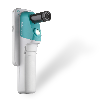Human trafficking, a form of modern-day slavery, has received a great deal of media attention lately and for a compelling reason; 40.3 million people have been victims of human trafficking worldwide. In spite of strong efforts to combat traffickers, current geopolitical conditions make more people vulnerable to human trafficking and the numbers continue to the rise. Those in the medical professions have a unique access point to intervene and offer assistance – but would you recognize a victim of human trafficking if they presented to your practice setting?

Human trafficking defined
The United Nations Protocol to Prevent, Suppress and Punish Trafficking in Persons defines human trafficking as “the recruitment, transportation, transfer, harbouring or receipt of persons, by means of the threat or use of force or other forms of coercion, of abduction, of fraud, of deception, of the abuse of power or of a position of vulnerability or of the giving or receiving of payments to achieve the consent of a person having control over another person, for the purpose of exploitation.”
What does human trafficking actually look like? Sex trafficking and labor trafficking represent two primary forms. Sex traffickers use threats, force, or coercion to engage adults and children in the commercial sex trade against their will. Using similar tactics, as well as debt bondage, labor traffickers force people to work across a variety of industries in poor conditions with little or no payment. Common industries in which labor trafficking occurs are in restaurants, domestic servants, construction, and the health and beauty industry.
Several risk factors can make a person vulnerable to becoming entrapped in a trafficking situation including recent migration or relocation, political instability, poverty, addiction, mental health issues and involvement in child welfare services. Traffickers often prey on these vulnerabilities and recruit by posing as potential intimate partners, offering false employment opportunities and other empty promises. Sadly, many times people are often turned out by their own family members.
Signs and symptoms of trafficking
Recognizing the signs of human trafficking in patients is no easy task. Persons involved in trafficking situations are often hiding in plain sight and do not come seeking treatment for the most obvious reasons associated with human trafficking. Possible signs include:
Poor mental health or abnormal behavior – the patient presents as fearful, anxious, depressed, submissive or paranoid. The patient is unusually fearful of law enforcement and avoids direct eye contact.
Poor physical well-being and appearance – the patient lacks regular access to healthcare, appears malnourished, signs of physical or sexual abuse, restraint or self-harm are present. Tattoos associated with gangs or “branding” may also be present. Attire is inappropriate or incongruent with current weather conditions.
Lack of control – patients are not allowed to speak for themselves. Someone claiming to be a family member or guardian does not allow the patient to be alone.
Inconsistencies – discrepancies appear in the patient’s story or age. They may have a lack of knowledge of their whereabouts or know their address.
This is what can be so difficult about identifying trafficking victims – this group of symptoms can be applied to numerous clinical issues.
Taking a complete patient history and asking poignant yet indirect questions may give hints and let a patient understand that it will be safe for them to disclose their situation to you can go a long way to provide assistance.
Next steps
If you do pick up on signs that someone may be trafficked, don’t feel discouraged if they don’t immediately disclose. The patient is the expert in their situation and it may not be the best time to say anything. You may have the urge to storm in and rescue your patients from danger, but this could actually escalate things and put their or others’ safety at risk. However, keep in mind that when a minor is involved, you will need to report in accordance with local mandatory reporting laws.
Make sure to speak to the patient in a private area. A patient may come to the ER with someone posing as an “uncle”, friend, or “translator” but in reality, this person could be their trafficker so it is important to interview separately. Build rapport and establish trust by avoiding questions that may sound judgemental. Some small talk may help the patient feel more comfortable.
Prepare yourself and learn about local resources for safety planning, counseling, shelters, and other non-profit organizations that can assist your patient. Keep discreet information cards on hand to give patients information for when they feel ready to seek help – try to keep in various languages if possible; and finally, stay informed. Resources, laws, and protocols for combating human trafficking constantly evolve.
Keep yourself updated on the latest resources in human trafficking, like our latest webinar Recognizing Human Trafficking in the ER – Strategies for SANE Examiners and Allies.








